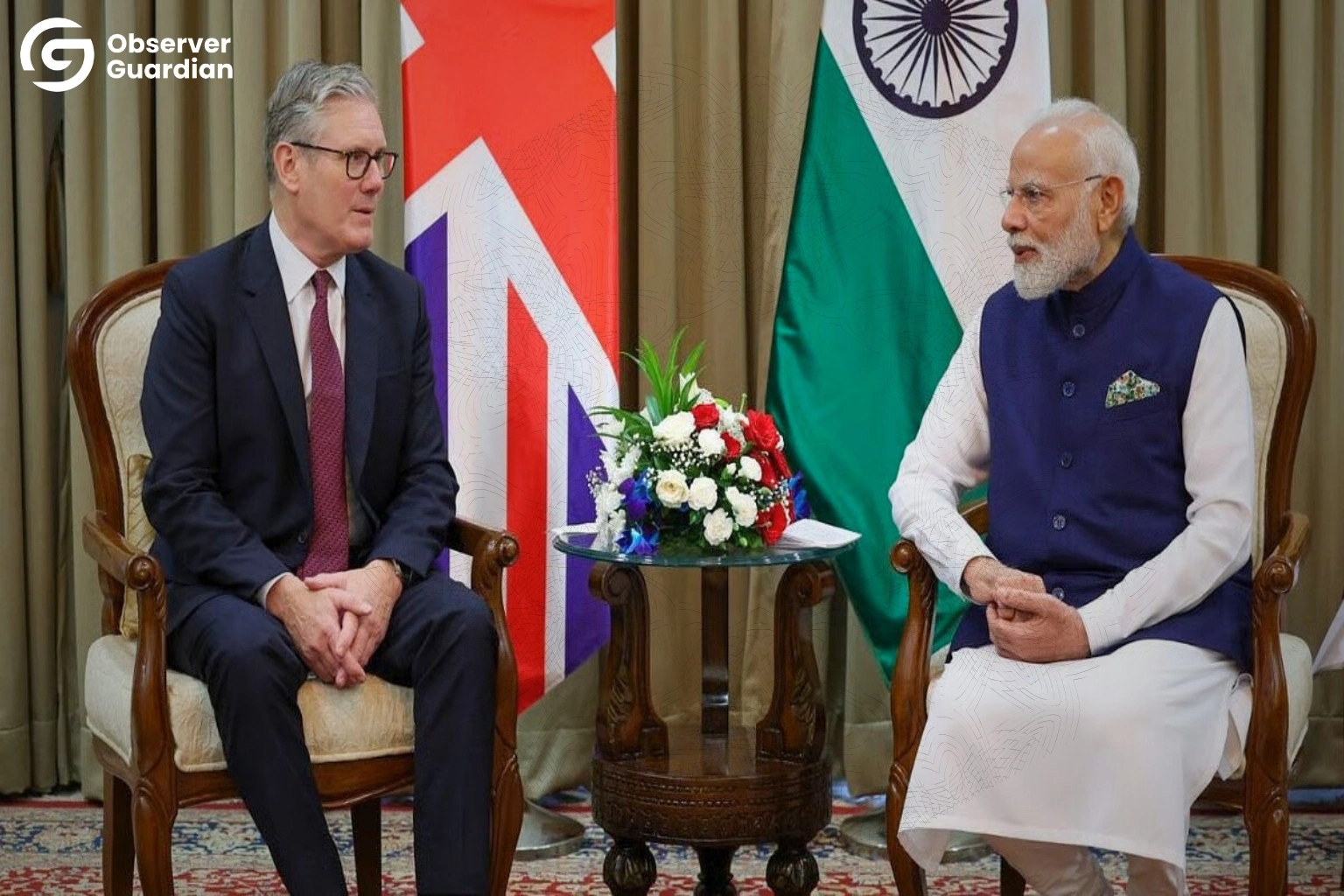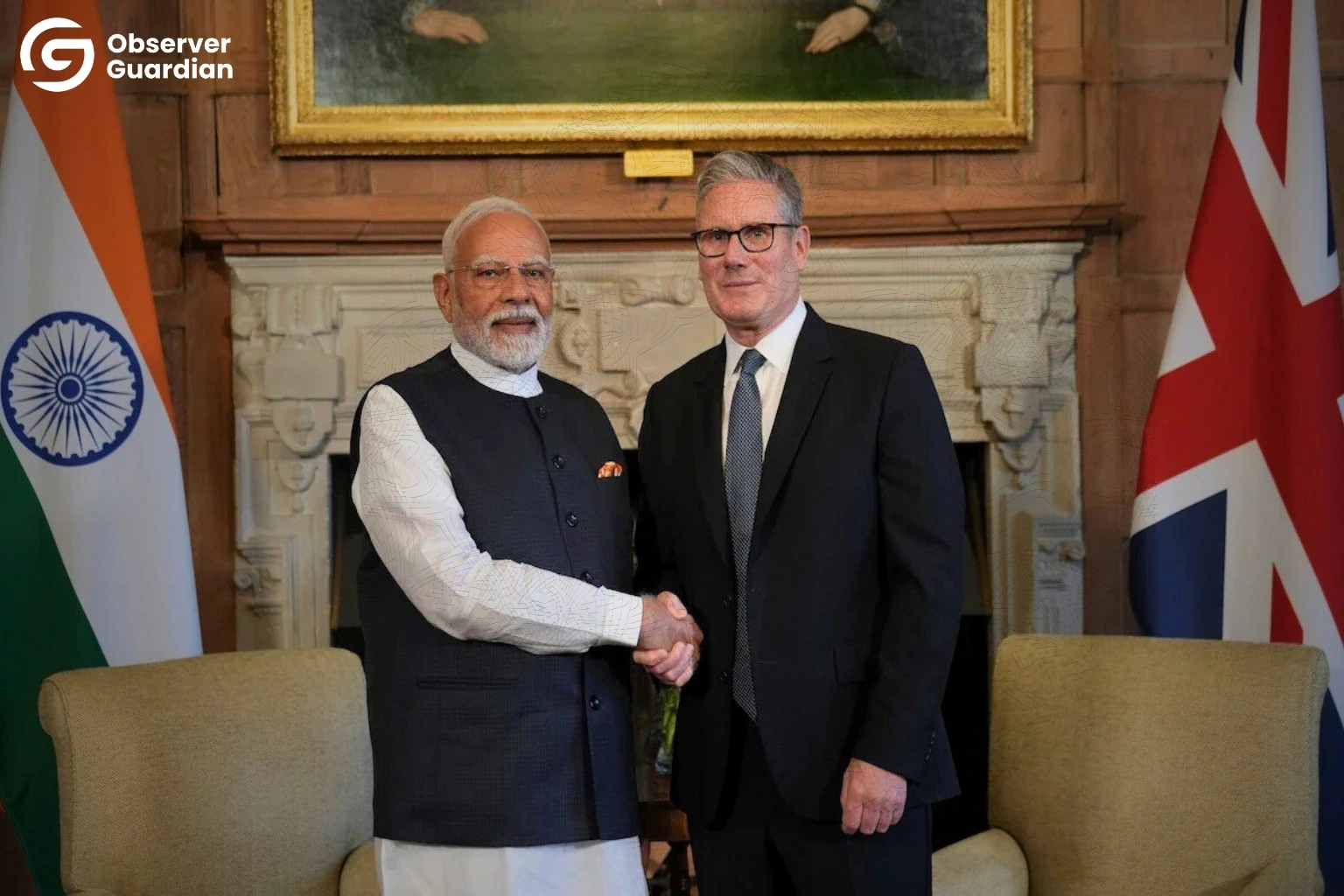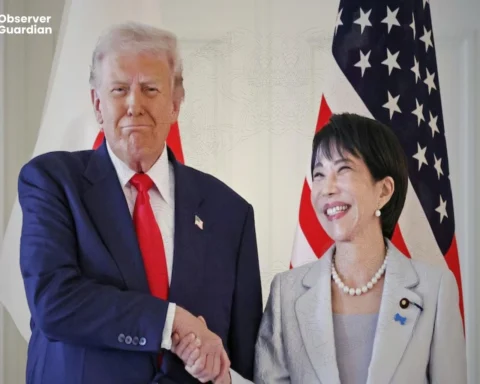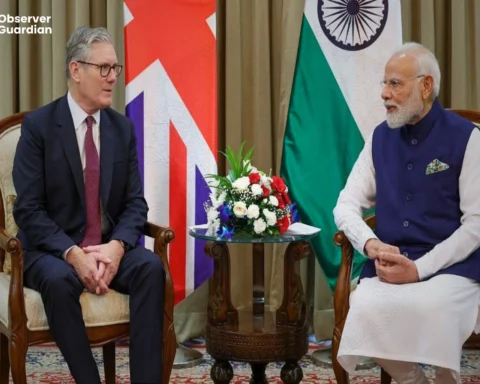The 2025 visit of UK Prime Minister to India was the most important diplomatic and economic event in the post-Brexit period. The visit was focused on strengthening bilateral trade, enhancing defense relations, and balancing geopolitics, which involves the US, India, and Russia. It was the symbol of opportunity and a trade-off to London, the attempt at gaining economic benefits in exchange for Western solidarity regarding the conflict in Ukraine.
The visit occurred amid a period of growing interdependence between the United Kingdom and India. Following Brexit, the UK has tried to diversify trade ties around Europe and India, one of the fastest growing economies of the world that has become the key to this strategy.
The signing of the Comprehensive Economic and Trade Agreement (CETA) in July 2025 marked a new beginning with ambitious targets to increase bilateral trade by approximately USD 56 billion to USD 120 billion by 2024 and 2030 respectively.
In the case of India, the agreement presented new opportunities in British markets for industries like machinery, pharmaceuticals, and mineral fuels. In the case of the UK, it was to increase the export of automobiles, financial services, IT, education, and clean energy fields important to the UK economy. Both governments rejoiced the initial results of the CETA deal when the Prime Minister made the visit to India. The UK stressed that 10,600 jobs were created or maintained in technology, finance, education, and clean energy. The figures in the trade indicate the importance of this partnership and bilateral trade totaled USD 23.1 billion in FY 2025, compared to USD 21.3 billion a year earlier.
Total imports and exports of goods and services according to sterling value reached GBP 44.1 billion in the twelve months ending in Q1 2025, an improvement by 10.1% annually. UK exports totaled GBP 17.5 billion, while imports increased to GBP 26.6 billion, expanding the trade deficit to about GBP 9.1 billion. However, this was considered a short-run imbalance portraying Indian competitiveness in industry and consumer demand.
Commerce and Defense Co-operation
The most prominent aspect of CETA was tariff abolition. India agreed to eliminate tariffs on 99% of UK products, while the United Kingdom reciprocated by reducing tariffs on 89.5% of Indian exports. Sensitive sectors were placed under quota arrangements, a provision favorable to British car manufacturers, and a 48-hour customs clearance target was established to facilitate smoother trade flows.
Moreover, Indian exports to the UK amounted to USD 14.5 billion, with electrical machinery, mineral fuels, gems, jewelry, and pharmaceuticals as major contributors. The trade relationship supports more than 600,000 jobs in both countries, a testament to its growing scope. On the defense front, new contracts worth over £600 million were signed, primarily in maritime systems, UAVs, radar, sonar, and communications. The two countries reaffirmed their commitment to joint Indo-Pacific naval exercises, aligning partially with US security interests in the region. However, US export control regulations particularly the International Traffic in Arms Regulations (ITAR) and the Export Administration Regulations (EAR) continue to restrict technology transfers, limiting deeper co-development of advanced defense platforms.
The Ukraine Conflict and the US Factor
The visit was overshadowed by Washington. This has made the enforcement of Western sanctions a problem, since 2022 India has been importing Russian oil at discounts. The US and UK have continuously asked India to cease reliance on Russia as an energy source, although New Delhi has stood by its position on strategic autonomy.
As a matter of fact, London has reacted in a subdued manner. The political impact of the Indian diaspora of 1.9 million people and increased trade role have softened UK criticism of India’s Russian policy. This diplomatic non-idealism approach undermines Western sanctions unity. The fact that India remains a significant purchaser of Russian oil is indirectly supporting Moscow’s war efforts, even though Western leaders view it as a strategic partner.
Strategic Implications
The new trade architecture benefits both, albeit asymmetrically. India has opened its agricultural sectors, whereas the UK has gained access to high-value markets such as finance and education. Investment flow indicates that UK cumulative FDI in India has reached USD 35.8 billion (2000–2025), whereas Indian FDI in the UK increased 22.2% last year to £12.4 billion. The symbolic strength of defense collaboration is technologically curtailed by US limitations. Meanwhile, the political clout of the Indian diaspora continues to influence British domestic policy toward India, even against Western geopolitical interests.
The UK-India 2025 alliance, symbolized by the Prime Minister’s visit and the CETA accord, is a pragmatic ambition.
It ensures economic growth and job creation, but also reveals how limited London is within the geopolitical background of multipolarity. The United Kingdom’s role as the “good cop,” emphasizing trade and political goodwill, contrasts with the United States’ “bad cop” approach of maintaining a hard line toward Russia a strategic balancing act aimed at preserving influence in South Asia. The outcome is a more economically attractive partnership with a dose of strategic uncertainty, reflecting the changing world order where pragmatism is becoming the norm over principle.
⚠ Disclaimer
The views and opinions expressed in this article are exclusively those of the author and do not reflect the official stance, policies, or perspectives of the Platform.








